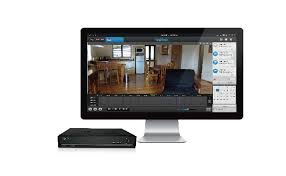What is an IP CCTV Camera
What is an IP CCTV Camera
An IP CCTV camera, also known as an IP camera or network camera, is a digital video camera that transmits footage using a network connection (Ethernet cable or Wi-Fi) instead of analog signals. Here's a breakdown of how it works:
Capturing Video: The camera captures video footage in digital format.
Data Transmission: The digital video data is compressed and then transmitted over a network cable or Wi-Fi connection.
Recording and Storage: The video data is typically stored on a Network Video Recorder (NVR) which can be located on-site or remotely accessed through a cloud storage service.
Remote Access: You can view live and recorded footage from the cameras remotely using a web browser or mobile app, allowing you to monitor your property from anywhere with an internet connection.
Benefits of IP Cameras over Analog Cameras:
Superior Image Quality: IP cameras offer higher resolutions (HD, 4K) compared to standard definition (SD) in analog cameras, providing sharper and clearer images for better identification.
Scalability: Adding new cameras to an IP system is easier as they connect to the network, eliminating the need for additional complex cabling required for analog systems.
Advanced Features: IP cameras often boast a wider range of features like motion detection with customizable zones, superior night vision, two-way audio communication for interacting with visitors, and remote control of PTZ (Pan-Tilt-Zoom) cameras to adjust viewing angles.
Power over Ethernet (PoE): This technology allows transmitting both data and power over a single cable, simplifying installation and reducing cable clutter.
Digital Recording: IP cameras work with Network Video Recorders (NVRs) that offer digital storage with greater flexibility, search capabilities, and potential cloud storage options compared to analog DVRs.
IP CAMERAS INSTALLATION METERIALS
The installation materials you'll need for your IP CCTV camera system will depend on the specific system you purchase (wired or wireless) and the number of cameras you'll be installing. Check out some general list of common items you might need:
Cameras:
IP Cameras: Choose the type that suits your needs (bullet, dome, PTZ, etc.) and ensure they are compatible with your NVR (see below).
Cabling (Wired Systems):
Ethernet Cable (Cat5e/Cat6): Used to transmit video data and power (if using PoE) over a network. Choose the appropriate cable length for each camera's location.
Power Cable (Optional): If your system doesn't use Power over Ethernet (PoE), you'll need separate power cables to provide power to each camera.
Connectors (Wired Systems):
RJ45 Connectors: Used on both ends of the ethernet cable to connect them to the camera and the NVR.
Mounting Hardware:
Screws and Anchors: For securing the cameras to walls, ceilings, or poles. Choose the appropriate type and size based on the mounting surface and camera weight.
Camera Mounts: Wall mounts, pole mounts, or other brackets depending on where you'll be installing the cameras.
Other Installation Materials:
Cable Clips: These help organize and secure the cables along walls or baseboards for a clean appearance.
Cable Conduit (Optional): Provides additional protection for cables running outdoors or exposed areas.
Crimping Tool (Optional): If you're using pre-made ethernet cables with RJ45 connectors, you won't need this. But if you're making your own cables, a crimping tool is necessary to properly attach the RJ45 connectors to the cable ends.
Electrical Tape: Useful for securing connections and providing some weatherproofing if needed.
Additional Considerations (Wired Systems):
Power Supply (Optional): If your cameras don't use PoE and you're using separate power cables, you might need a power supply unit to provide the required voltage to the cameras.
Network Switch (Optional): If you have many cameras or a large network, you might need a network switch to connect all the devices.
For Wireless Systems:
Wireless IP Cameras: These cameras connect to the network via Wi-Fi, eliminating the need for ethernet cables. However, consider factors like signal strength, interference, and potential security vulnerabilities when choosing this option.
Power Supply: Wireless IP cameras typically require a power supply unit to provide power.
Additional Considerations (Wireless Systems):
Wi-Fi Network Strength: Ensure your Wi-Fi network has sufficient signal strength to reach all the cameras reliably. Consider Wi-Fi extenders if needed.
Security: Wireless networks can be vulnerable to hacking. Use strong passwords and consider additional security measures for your network.
General Tips:
Read the manual: Always consult the instruction manual that comes with your CCTV camera system for the most accurate recommended installation materials.
Plan your layout: Plan the placement of your cameras and cables before starting the installation.
Safety first: Be mindful of electrical safety and follow proper procedures when working with power supplies and cables.
Consider professional installation: If you're not comfortable with electrical work or network configuration, consider hiring a professional installer.
By having the right materials and following a proper plan, you can successfully install your IP CCTV camera system.
In essence, IP cameras offer a future-proof solution with superior image quality, scalability, advanced features, and easier integration for a comprehensive security system.




Comments
Post a Comment